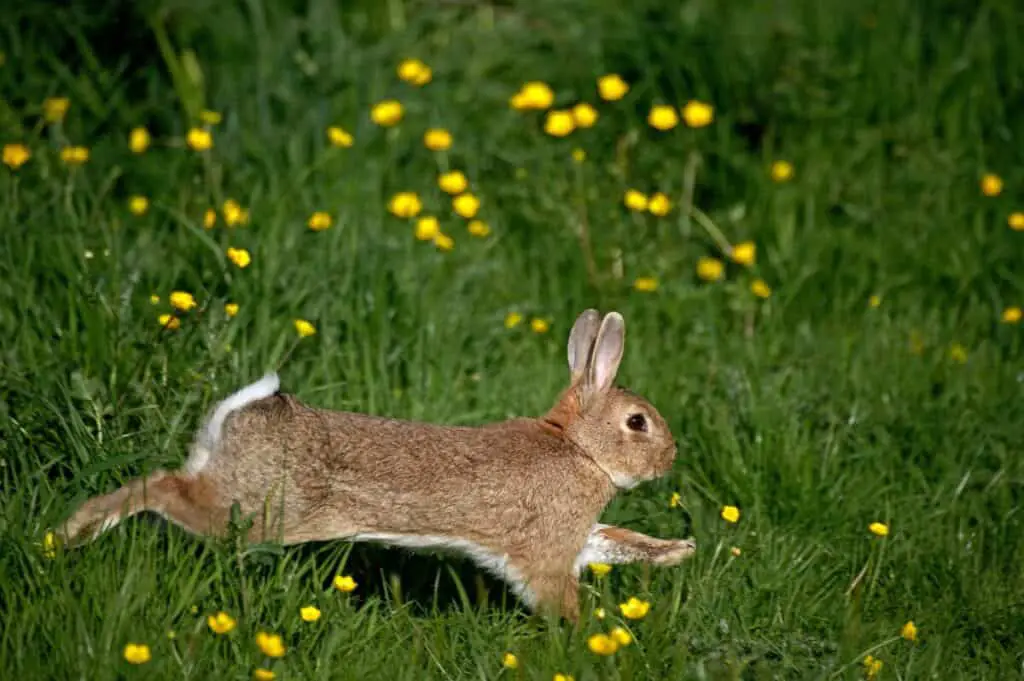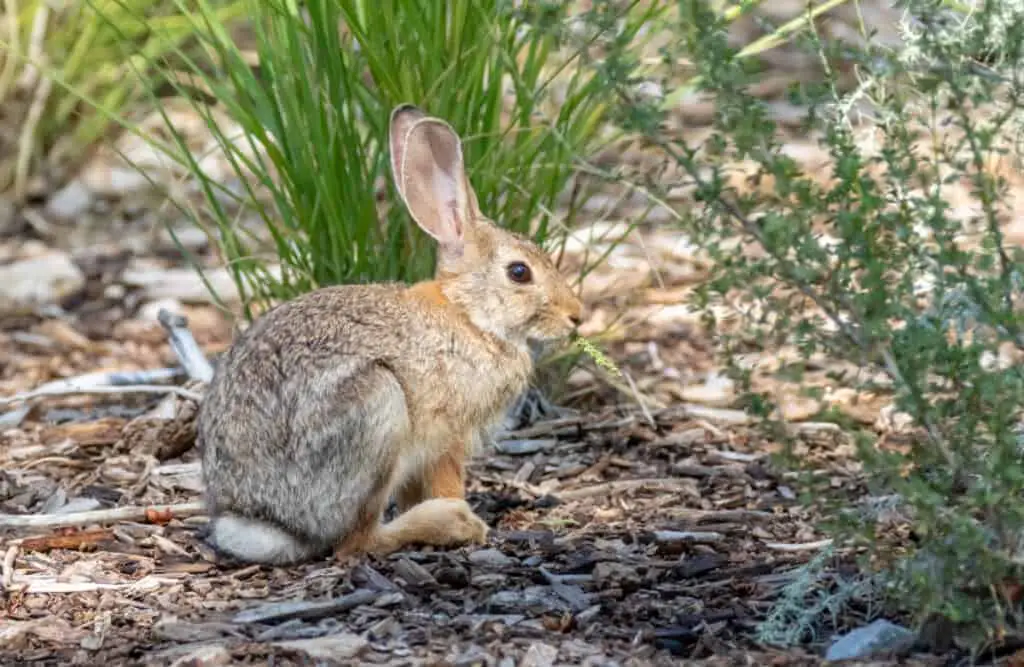The European rabbit, scientifically known as Oryctolagus cuniculus, is a species of small mammal belonging to the family Leporidae. It is native to southwestern Europe and northwestern Africa but has been widely introduced to various parts of the world due to human activities.
This article aims to provide an overview of the European rabbit’s native habitat and distribution, physical characteristics and adaptations, reproduction and life cycle, feeding habits and diet, ecological impact in non-native habitats, conservation efforts and management strategies, as well as its interactions with humans and cultural significance.
The European rabbit’s native habitat includes diverse ecosystems such as Mediterranean grasslands, woodlands, shrublands, and coastal areas. It was historically found across much of Western Europe from Portugal to northern Italy; however, it has also been introduced by humans to other continents including Australia, New Zealand, South America, North America, and several islands. The species is known for its adaptability to different environments ranging from semi-arid regions to lush grasslands.
In terms of physical characteristics, the European rabbit typically has a compact body with strong hind legs adapted for fast running and jumping. Its fur coloration can vary greatly depending on sub-species or domestication status but commonly ranges from greyish-brown to sandy brown. These traits contribute to their survival in their natural habitats where they use burrows for shelter against predators while relying on their agility for escape when necessary.

Native Habitat and Distribution
The European rabbit’s native habitat and distribution are key factors to consider when studying its ecology and behavior.
The native range of the European rabbit extends across most of Western Europe, including countries such as Spain, France, Italy, and Portugal. It is also found in parts of Eastern Europe and North Africa. This species typically inhabits open grasslands, agricultural fields, shrublands, and coastal dunes.
In terms of population trends, the European rabbit has experienced both fluctuations and declines throughout its native range. In the past, these rabbits were abundant in many parts of Europe, playing important ecological roles as grazers and prey for predators. However, due to various factors such as habitat loss, disease outbreaks (such as myxomatosis), hunting pressure, competition with other species (such as hares), and changes in land use practices (including intensive agriculture), the populations have significantly decreased in some areas. These declines have led to local extinctions in certain regions where they were once common.
Despite these challenges, the European rabbit still maintains viable populations in several countries within its native range.
Physical Characteristics and Adaptations
Adapted for survival in diverse environments, the European rabbit possesses a streamlined body shape and powerful hind limbs. These physical characteristics enable the rabbit to navigate through various landscapes and escape from predators efficiently. The streamlined body shape allows it to move swiftly through dense vegetation, while the strong hind limbs provide it with remarkable jumping abilities, reaching speeds up to 50 kilometers per hour. Furthermore, rabbits have long ears that can rotate independently, allowing them to detect potential threats from all directions. This adaptation enhances their chances of survival by alerting them to approaching predators.
One notable adaptation exhibited by European rabbits is their fur color variations. Rabbits’ fur can range from grayish-brown to sandy yellow or even pure white, depending on their habitat and season. This variation in fur color helps them blend into their surroundings and remain camouflaged against potential predators such as foxes or birds of prey. In snowy areas, rabbits with white fur have an advantage as they are less visible against the snowy landscape, providing them with increased protection. Conversely, rabbits with darker fur are better suited for blending into woodland habitats where there is a greater prevalence of shadows and darker vegetation. By having different fur colorations, European rabbits increase their chances of survival by minimizing their visibility and improving their ability to evade predators in different environments.
Reproduction and Life Cycle
Reproduction and life cycle of the European rabbit involve a series of distinct stages and processes.
- Breeding behavior: The breeding season for European rabbits typically occurs from February to August, with peak activity during spring. During this time, males engage in aggressive behaviors such as chasing and boxing with other males to establish dominance and gain access to females. Once a dominant male establishes his territory, he will mate with multiple females within his range.
Female rabbits are induced ovulators, meaning that they release eggs in response to copulation. After mating, the female will undergo a gestation period of around 30 days.
- Reproductive success: The European rabbit has a high reproductive potential due to its ability to produce multiple litters per year. A litter typically consists of 3-12 young, called kits or kittens. The female constructs a burrow system known as a warren where she gives birth and raises her offspring in relative safety. Kits are born hairless and blind but develop quickly, opening their eyes after about 10 days and becoming independent at around 4-5 weeks old.
- Life cycle: As the kits grow older, they venture out of the warren under the watchful eye of their mother, learning essential skills such as foraging for food and avoiding predators. By around 8 weeks old, they begin dispersing away from their natal warren to establish their own territories or join existing social groups nearby. At this stage, sexual maturity is reached by both males and females, enabling them to participate in the breeding process themselves.
- Factors influencing reproductive success: Several factors can influence the reproductive success of European rabbits including environmental conditions (such as food availability), predation pressure from natural predators like foxes and birds of prey, disease outbreaks (e.g., myxomatosis), competition for resources within social groups or between neighboring individuals, and human activities such as habitat destruction or hunting.
Understanding the breeding behavior and life cycle of European rabbits is crucial for conservation efforts and managing their populations, as it allows us to assess how these factors impact their reproductive success and overall population dynamics. By studying these aspects, scientists can develop strategies to ensure the long-term survival of this species in its native habitats.
Feeding Habits and Diet
Feeding habits and diet play a critical role in the survival and overall health of the European rabbit. These creatures have specific foraging behavior that allows them to obtain the necessary nutrients for their survival.
The European rabbit is primarily herbivorous, feeding on a wide variety of plant materials such as grasses, herbs, leaves, and bark. They are known to be selective feeders, choosing plants based on their nutritional value and availability. This adaptability in their diet helps them cope with changing environmental conditions.
The nutritional requirements of the European rabbit depend on several factors including age, sex, reproductive status, and environmental conditions. They require a high-fiber diet to maintain proper digestive function and dental health. Grasses are an essential component of their diet as they provide the necessary fiber content. Additionally, rabbits also consume other plant materials rich in nutrients such as legumes and young shoots. It is important for these animals to have access to a diverse range of food sources to meet their nutritional needs adequately.
The feeding habits and diet of the European rabbit are crucial for its survival and overall well-being. Their foraging behavior allows them to select nutritionally valuable plants while adapting to changing environmental conditions. A high-fiber diet consisting mainly of grasses is essential for maintaining proper digestive function and dental health in these fascinating creatures. Ensuring access to diverse food sources is vital in meeting their nutritional requirements effectively.
Ecological Impact in Non-Native Habitats
The presence of the European rabbit in non-native habitats has led to significant ecological impacts, affecting both the biodiversity and ecosystem dynamics.
As an invasive species, the European rabbit competes with native fauna for limited resources such as food and shelter. This competition can lead to a decrease in population size or even extinction of certain native species, disrupting the delicate balance of the ecosystem.
Additionally, rabbits have a high reproductive rate, which allows them to quickly colonize new areas and outcompete native species for resources.
Furthermore, the burrowing behavior of European rabbits can cause extensive damage to vegetation and soil stability. Their burrows create complex underground systems that can undermine plant roots and destabilize slopes, leading to erosion and habitat degradation. This disruption of natural habitats further exacerbates the negative impact on native flora and fauna.
The introduction of European rabbits into non-native habitats has also been associated with changes in predator-prey dynamics. In some cases, predators that rely on specific prey species may struggle to adapt their hunting strategies to target rabbits instead. This shift in predator-prey relationships can have cascading effects throughout the food web, potentially leading to changes in community structure and composition.
Overall, the ecological disruptions caused by European rabbits in non-native habitats highlight the importance of preventing introductions of invasive species. Efforts should be made to control rabbit populations through methods such as trapping or fencing while also promoting conservation measures for native flora and fauna.
By addressing these issues proactively, we can mitigate the negative impacts that invasive species like European rabbits have on ecosystems worldwide.
Conservation Efforts and Management Strategies
The ecological impact of European rabbits in non-native habitats has prompted the need for conservation efforts and management strategies.
The establishment of rabbit populations outside their native range has resulted in significant challenges for conservationists. One major challenge is the competition between rabbits and native species for limited resources such as food and habitat. The high reproductive rate of rabbits allows them to rapidly outcompete native species, leading to declines in biodiversity.
To address these conservation challenges, various management strategies have been implemented. One approach is the use of biological control methods, such as introducing predators or diseases that specifically target rabbit populations. For example, the introduction of myxoma virus and rabbit hemorrhagic disease has successfully reduced rabbit numbers in some areas. However, these methods may have unintended consequences on other aspects of the ecosystem.
Another strategy is the implementation of reintroduction programs for threatened or endangered species that have been negatively impacted by rabbits. By controlling rabbit populations through trapping, fencing, or targeted culling, suitable habitats can be restored to support indigenous flora and fauna. Reintroducing native species into these restored habitats helps to rebalance ecological processes and enhance overall biodiversity.
Addressing the ecological impact of European rabbits in non-native habitats requires concerted conservation efforts and effective management strategies. While biological control methods have shown some success in reducing rabbit populations, careful consideration must be given to potential impacts on other species within the ecosystem. Additionally, reintroduction programs play a crucial role in restoring balance and promoting biodiversity in areas affected by invasive rabbits. By implementing these strategies alongside continued research and monitoring efforts, it is possible to mitigate the negative effects of European rabbits on non-native ecosystems.

Interactions with Humans and Cultural Significance
Interactions between humans and the European rabbit have had significant cultural significance throughout history. This small mammal has been a part of various cultural traditions and historical folklore in different regions of the world. Here are some examples that highlight the importance of the European rabbit in human culture:
- Easter Bunny: The European rabbit is often associated with Easter celebrations, particularly in Western cultures. According to tradition, the Easter Bunny brings gifts and hides colorful eggs for children to find on Easter morning. This connection between rabbits and Easter has become deeply ingrained in popular culture.
- Lucky Charm: In some cultures, rabbits are considered symbols of good luck. It is believed that carrying a rabbit’s foot or having an image of a rabbit can bring good fortune and protection from evil spirits. This belief dates back centuries and is still present in certain cultures today.
- Folklore Tales: Rabbits feature prominently in many folklore tales around the world. These stories often depict rabbits as clever, mischievous creatures capable of outsmarting their adversaries through wit and cunningness. Such tales serve as cautionary or moral lessons for both children and adults.
- Artistic Representations: The European rabbit has inspired artists across different mediums throughout history. From ancient cave paintings to contemporary art, rabbits have been depicted in various forms, symbolizing fertility, agility, innocence, or even vulnerability.
These examples demonstrate how the European rabbit has become intertwined with human culture through its representation in festivities like Easter, its association with luck and protection from evil spirits, its presence in folklore tales conveying life lessons, as well as its artistic representations over time.
